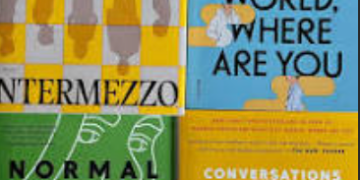 orn in Annapolis, Maryland in 1955, Barbara Kingsolver grew up in Kentucky, the home area of her physician father. Today she lives in Southwestern Virginia near the Tennessee border. Since 1988, Kingsolver has gained considerable fame as a novelist, poet, essayist, and environmental activist. Like Gail Godwin, she has achieved both critical and popular fame beginning with her novel, The Bean Trees in 1988. The novel features a young woman who leaves Kentucky for Arizona; along the way, she adopts an abandoned child. The Poisonwood Bible (1998), Kingsolver’s greatest success to date, tells the story of a missionary family in the Congo, where Kingsolver, at the age of seven, moved with her family. Through the years, Kingsolver has earned a number of awards including an honorary doctorate from Duke University, the National Humanities Medal, and nominations for the PEN/Faulkner Award and the Pulitzer Prize.
orn in Annapolis, Maryland in 1955, Barbara Kingsolver grew up in Kentucky, the home area of her physician father. Today she lives in Southwestern Virginia near the Tennessee border. Since 1988, Kingsolver has gained considerable fame as a novelist, poet, essayist, and environmental activist. Like Gail Godwin, she has achieved both critical and popular fame beginning with her novel, The Bean Trees in 1988. The novel features a young woman who leaves Kentucky for Arizona; along the way, she adopts an abandoned child. The Poisonwood Bible (1998), Kingsolver’s greatest success to date, tells the story of a missionary family in the Congo, where Kingsolver, at the age of seven, moved with her family. Through the years, Kingsolver has earned a number of awards including an honorary doctorate from Duke University, the National Humanities Medal, and nominations for the PEN/Faulkner Award and the Pulitzer Prize.
Kingsolver’s most recent novel is Demo (2022). In the first paragraph of her Acknowledgments, Kingsolver credits Charles Dickens’s influence: “I’m grateful to Charles Dickens for writing David Copperfield, his impassioned critique of institutional poverty and its damaging effects on children in his society.” As a “wave” to Dickens within the novel, she has Demon comment: “ . . . Charles Dickens [was] one seriously old guy, dead and a foreigner, but Christ Jesus did he get the picture on kids and orphans getting screwed over and nobody gives a rat’s ass. You’d think he was from around here.” Demon Copperhead tells the story of Damon Fields, nicknamed Demon Copperhead, a play on his first name and his fiery hair. Like David Copperfield, Damon is clearly from the underclass, born in Southwest Virginia to a teenaged, unwed mother and a father of Melungeon background who dies in a horrible accident before his son’s birth.
Damon’s mother is an alcoholic drug user whose short life is marked by binges and periods of semi-rehabilitation. In one of her clean periods, she meets and marries Stoner, the horror who becomes Demon brutal stepfather. The boy, presented from the beginning as intelligent and resourceful, falls victim to abuse, poverty, degradation, and opioid addiction himself. All the while he harbors both a special talent for art and a sensitive appreciation for the rural environment in which he grows up. Victimized by a social services system–over-worked and deadened to the realities of poverty–, Demon ends up in foster homes, one a failing tobacco farm where he and two other boys work as unpaid slaves. On the farm Demon also meets a highly charismatic and evil local football hero whom he idolizes–at least for a time.
Finally, Demon temporarily reunites with his grandmother, who finds him a place with a rural football coach, realistically drawn as living only for the game. The coach recognizes Demon’s athleticism, but a football injury in his sophomore year of high school leads to him to addiction, a drug-addled girlfriend, and other undeserved setbacks. Demon’s only advocates are the coach’s daughter Angus and his art teacher and her husband, a mixed-race couple who care about him.
The great strength of the novel lies in Kingsolver’s successful of first person narration; Kingsolver handles the boy’s vernacular with masterly skill. She gives him intelligence and realistic outlook that enable him “to tell it as it is.” Novelist Richard Powers calls Demon’s narration “one of the great virtuosic vocal performances. This guy’s voice is just pouring out.”
have one problem with the novel, evolving from my interest in what filmmaker Gary Hawkins first called “rough south” literature. Beginning with Harry Crews from Georgia, a number of writers, actually from the working class, began to tell their own stories about impoverished lives. Among them are Tim McLaurin from North Carolina, Larry Brown from Mississippi, Dorothy Allison from South Carolina, and William Gay from Tennessee. Because these writers actually lived what they depict in their fiction, their novels show an authenticity missing in writers like Barbara Kingsolver, who are second generation descendants of the rural poor; these people are educated writers with social consciences. They use their knowledge of the hard life to write effective and highly readable fiction, but it comes off for what it is–second-hand. In an oblique way, Kingsolver herself addresses this issue in Demon Copperhead by giving Demon the talent to tell his own story through the graphic novel he and his friend, Tommy Waddell, are creating at the end of the novel.
Demon’s story is not for the readers looking for escapist fiction; his is a real story that reflects quite strongly the lives of struggling people who live in rural areas similar to our own. Local media here report that seven people died of drug overdoses in Rockingham County in 2021, and a DNR story as recent as February 9 tells of two women who have taken the issue to the Virginia legislature. Though somewhat melodramatic in content and full of lengthy detail (the novel runs 546 pages), Demon Copperhead is well worth reading.
































